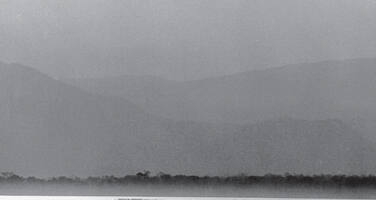Mana Pools National Park, Sapi and Chewore Safari Areas
Factors affecting the property in 1986*
- Illegal activities
International Assistance: requests for the property until 1986
Total amount approved : 0 USD
Missions to the property until 1986**
Conservation issues presented to the World Heritage Committee in 1986
Unprecedented poaching pressures from the Zambian side of the Zambesi River have resulted in the loss of over 100 rhinos as well as loss of human life.
Senior government officials from each country have issued statements of concern and patrols have been reinforced.
Addition of the Lower Zambesi National Park in Zambia to the site as proposed at the 8th Committee meeting would be one measure that could lead to better protection of the area. (Further details to be reported at the Committee meeting).
Summary of the interventions
Decisions adopted by the Committee in 1986
10 COM IX.A.18-19
SOC: Mana Pools, Sapi and Chewore Reserves (Zimbabwe) & Selous Game Reserve (Tanzania)
18. The Committee, when learning of the dramatic increase in poaching reported by IUCN for Mana Pools, Sapi and Chewore Reserves in Zimbabwe and for Selous Game Reserve in Tanzania, recognised that this particular problem should also be approached globally, by stemming the illicit trade in wildlife and especially of elephant tusks and rhinoceros horn. In this regard, the Committee requested that its Chairman contact the Secretariat of the Convention on the International Trade of Endangered Species of Wild Flora and Fauna (CITES), which has been ratified by many States Parties to the World Heritage Convention, to express the Committee's concern that the illicit trade was severely affecting certain natural World Heritage properties and requesting that, measures be taken within the framework of the two Conventions to eradicate poaching in such sites. One member of the Committee suggested also that certain industrialised countries could consider "twinning" arrangements between one of their own natural world heritage sites and a site located in a developing country which did not dispose of sufficient resources for its protection and maintenance. In this connection, IUCN noted that it was currently developing a "twinning" programme for parks which could have many implications for World Heritage properties. Another member of the Committee suggested that Committee members, with the assistance of the Secretariat as appropriate, should contact national authorities in particular through their representation in Paris, to explore the suitability of bilateral assistance to improve the protection and maintenance of natural World Heritage properties reported by IUCN as being under threat. As concerns Selous Game Reserve in particular, the Committee indicated its willingness to set aside a contribution from the World Heritage Fund towards a project aimed at enhancing the protection of this site.
19. In concluding the debate, the Committee decided that the following measures should be taken:
a) that the Chairman would write to the CITES Secretariat to explore the means to use both conventions to mitigate the situation in Selous National Park (Tanzania) and Mana Pools, Sapi and Chewore Reserves (Zimbabwe) in particular, and for combating poaching in natural World Heritage properties in general;
b) the Secretariat should contact the authorities of Tanzania and Zimbabwe (in Paris and in the capitals) respectively to develop, in cooperation with IUCN (and other'appropriate organisations and institutions) suitable projects for technical cooperation under the World Heritage Fund, and in parallel, to study the possibility of inscribing Selous National Park and Mana Pools, Sapi and Chewore Reserves respectively on the List of World Heritage in Danger.
No draft decision proposed
Exports
* :
The threats indicated are listed in alphabetical order; their order does not constitute a classification according to the importance of their impact on the property.
Furthermore, they are presented irrespective of the type of threat faced by the property, i.e. with specific and proven imminent danger (“ascertained danger”) or with threats which could have deleterious effects on the property’s Outstanding Universal Value (“potential danger”).
** : All mission reports are not always available electronically.


